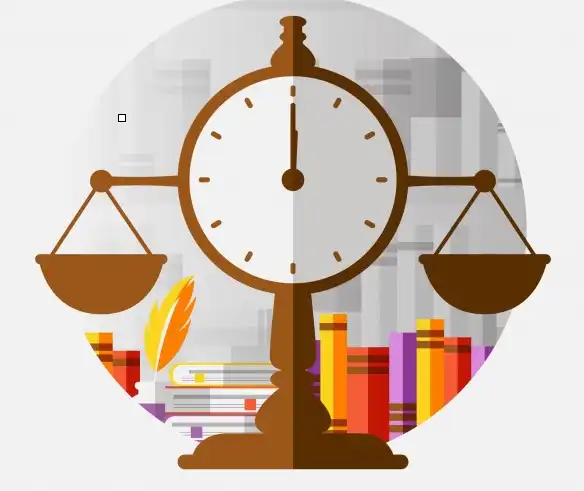During a boom cycle in the market, it is easy to assume that the market can only move upwards with your investments. Experienced investors understand, though, that markets do not follow straight lines indefinitely, booms turn to busts, and unforeseen events can erase profits in a single day. It does not matter how good the economy appears to be today, you cannot tell the headlines tomorrow, policies and world crisis.
This is why one of the old principles of personal finance has withstood the test of time, diversification. Diversification is essential in protecting your money and growing your wealth as a first-time investor or a portfolio manager.
Here, in this overview, we are going to dissect:
- The truth about diversification and why it works
- The major forms of diversification strategies
- Real, tangible portfolio diversification measures
- The most frequent pitfalls to avoid, such as excessive diversification
- Sample portfolios of various risk levels
- Fees, rebalancing and discipline tips
This article is meant to guide you in case you wish to invest prudently and sleep soundly at night.
What is Diversification and Why is it Important?
Diversification is a risk management tool by which a variety of investments are combined in the same portfolio so that the poor performance of one asset is lessened by the good performance of another. It can be expressed in the old proverb: Do not put all your eggs in one basket.
The idea is straightforward: when you diversify your money across a combination of asset classes, industries, and geographies that do not all move in the same direction at the same time, you can reduce your total risk without compromising your anticipated returns.
Example
Consider a situation where you put all your savings on a single company, say, a tech giant. In case that company is suddenly regulated or misses earnings, your portfolio may take a serious blow overnight. However, by having a pie that includes that company plus investments in healthcare, consumer goods, government bonds, real estate, and commodities, a poor performance in one segment can be offset by performance or stability in another.
Technically, diversification lessens the unsystematic risk, or the risk that is associated with specific companies or industries. Although you cannot avoid systematic risk (the risk that spills across all markets such as a world-wide recession) you can handle the company-specific risks when you have a well-diversified portfolio.
The Mechanism of Diversification
When they tell you to diversify your portfolio they are actually telling you: do not invest all your money in things that move up and down together. In comes correlation. Correlation simply refers to the movement of two things relative to each other, do they move in the same way, do they move in different directions, or do they move randomly?
Positive Correlation
Here we go hand in hand. In the case of positive correlation between two investments, they tend to rise or fall simultaneously.
Example
- Two high-tech corporations such as Apple and Microsoft.
- When the technology industry is performing well, then both the stocks are likely to increase.
- They might both tumble at the same time in case something harms the tech industry (such as a new regulation or a decrease in demand).
- Therefore, in case you invest all your money in the similar things with positive correlation, you will incur greater losses in case that group declines.
Negative Correlation
Here we go by cross purposes. Two investments with negative correlation move in opposite direction.
Example
- Government bonds and stocks.
- In a good economy, they will tend to buy stocks and sell safe bonds, thus the stocks will rise and bonds may fall.
- When the economy is weak, people usually sell stocks and purchase secure bonds, hence stocks decline whereas bonds can increase.
Negative correlation is helpful in that when one component of your portfolio goes down, another component will go up, and things will even out.
Zero Correlation
In this case we do not have a pattern. In some cases, there can be no correlation between two things which is known as zero correlation where there is no evident relationship between the movements.
Example
- Gold vs. a small tech startup price.
- Gold could be shifting on fear or inflation around the world.
- A micro tech stock may be subject to movement as a result of a new product or earnings.
- They have no powerful pattern that connects them.
Good diversification is a combination of assets that have low or negative correlations. As an example, in case of a recession stock prices would decline and government bonds could increase due to the safety factor. Another hedge can be seen in the form of real assets such as gold or real estate, which can be valuable when markets crash.
Combining investments and asset classes with varying correlations together decreases the likelihood that all your portfolio will fall simultaneously.
Diversification Strategies Types
There is no single strategy that suits all people, the most suitable combination varies with your objectives, age, risk tolerance, and time horizon. Good diversification = to own non-correlated things.
- It cushions you against surprises.
- It flattens large fluctuations.
- It keeps your money circulating in other areas of the economy.
Diversification is not simply purchasing a couple of other things. It is a strategy of diversifying your finances, so that you are not overly reliant on any particular thing performing well. These are six simple explanations of how people diversify:
Cross Asset Classes
The first is to diversify your money in various types of investments. They are referred to as asset classes. All of them react differently to the economy.
Examples
- Stocks (Equities): May increase your money quickly, but prices fluctuate upwards and downwards more.
- Bonds (Fixed Income): Less volatile; provide you with constant income and less risk.
- Real Assets: Tangible things you can touch such as real estate, farmland or infrastructure (roads, bridges).
- Commodities: Gold, oil, or farm products these would usually safeguard you when the prices are going up in the economy (inflation).
- Alternative Investments: Hedge funds, private equity, art or crypto, etc. These can provide growth or special opportunities but are only suited to experienced investors.
The reason why this works
Various types of assets respond differently to the economy. As an illustration, during a recession, stocks can decrease whereas government bonds tend to support. When the prices go up, real estate can maintain their value.
The Asset Classes Within Asset Classes
Then, it is not enough to get one item in each category; diversify within each category as well.
For Stocks
- Different industries (tech, healthcare, energy, consumer products, etc.) own companies.
- Invest in large companies (large-cap), medium (mid-cap), and small (small-cap).
- Combine known and tried-and-true companies with newer companies that have the potential to expand rapidly.
For Bonds
- Combine government bonds (safer) and corporate bonds (a bit riskier, higher return).
- Combine short term, medium term and long term bonds- they respond differently to interest rates.
- You may be paying high taxes and in that case, you may use municipal bonds which will save you money.
Why this is good
A bad stock or bond can be offset by a good one.
Geographic Diversification
Do not invest all your money in a single country. Each economy of any country is unique.
Example
US, Europe, Asia, and the emerging markets (such as India or Brazil) develop at various times and rates.
There are locations that grow faster and more with ups and downs. Others are steady and increase at a slower rate.
The rationale of why this is effective: When the market of your home country declines, your foreign investments may remain constant or even increase.
Various Risk Profiles
Diversify your portfolio by mixing investments of varying risk.
Examples
- Safe/Low-risk: Cash, savings account, government bonds.
- Growth/High-risk: Stocks, REITs (real estate funds) or commodities or alternates.
Why it works
The more secure investments will cushion your money when the risky investments fall. The risky ones assist in increasing your money with time.
Various Maturity Duration (Bonds)
When you purchase bonds, be concerned with their maturity (when you will get your money back).
Examples
- Short-term bonds: Less risky, less sensitive to interest rates, but offer less.
- Long-term bonds: Pay higher interest but prices can fluctuate more with change in rates.
Why this works
The combination of short and long bonds can help you balance returns and cushion you against an interest-rate increase or decrease.
Tangible vs. Intangible Assets
Add physical items and paper/virtual investments.
Examples
- Physical: At least real estate, gold, farmland has a real value.
- Intangible: Stocks, ETFs (baskets of stocks), mutual funds, easy to buy or sell when you want cash.
Why this works
Real assets can retain their value during market disasters. You can sell intangible assets easily in case you want to get money quickly.
The Importance of a Well-Diversified Portfolio in Any Market
Diversification is a simple thing to ignore during good market conditions. During bull markets, it is so enticing to bet more on the winners. However, history explains to us that downturns, be it the dot-com crash, the Great Recession, or the COVID-19 market plunge, occur rapidly and harshly.
Diversification is a shock absorber when a market correction occurs. It will not help to get rid of losses altogether, but can restrict them and ensure your returns are smoothed over time. A well-behaved, well-diversified approach is your most reliable protection against the unknown, and one of the most sensible means of accumulating wealth over decades, not just over months.
How to Create a Diversified Portfolio (Step-by-Step) (With Examples)
Diversification is not a fancy term, it is your shield against large losses and sleepless nights. It is one thing to know that you need to diversify and another thing to do it. We will take it step by step, and actual portfolio examples that you can mold to your objectives.
Determine your Goals and Risk Tolerance
Before you select any stocks, bonds or funds, you should ask yourself:
What are you investing in? Will he be retired in 30 years? Purchasing a home in 5? Paying tuition fees to your children?
How risky are you? Would you be able to wait and see your investments fall by 20 percent without selling them out in a panic?
Depending on your responses, you will construct a Conservative, Balanced, or Aggressive portfolio.
Example
- Are you near retirement or simply do not like to lose money? You will probably be Conservative.
- Think Balanced, if you prefer a steady growth and are able to tolerate ups and downs.
- You may want to go Aggressive, assuming you are still young, have time, and want high growth.
Select Your Asset Allocation
The formula of your portfolio is your asset allocation. It determines the allocation into stocks, bonds, real estate, commodities, or alternatives.
The 60/40 split (60 percent stocks and 40 percent bonds) is a good rule of thumb, but it is only a starting point.
This is what various allocations would appear like in practice:
Conservative Portfolio
- 20% Stocks: Large, stable companies that pay consistent dividends.
- 60% Bonds: Pay attention to secure government or high-quality corporate bonds in order to receive stable income.
- 10% REITs: Commercial real estate to generate additional income and inflation protection.
- 10% Cash: Emergencies or opportunities.
Balanced Portfolio
- 40% Stocks: Diversified across countries and sectors.
- 40% Bonds: A combination of short-, medium-, and long-term bonds to create stability.
- 10% REITs: Provides real estate exposure.
- 10% Commodities: Such as gold or agriculture that tends to be valuable when markets decline.
Aggressive Portfolio
- 70% Stocks: This contains small firms and foreign stocks in order to have greater growth.
- 20%: Hedge funds, private equity, or even crypto, with greater risk, greater potential reward.
- 5% bonds: Principally higher-yield bonds.
- 5% Commodities: As a hedge against inflation, such as oil or metals.
Choose the Appropriate Investment Vehicles
When you know what to purchase, then, decide how to purchase. You do not have to purchase 50 different stocks and bonds manually and that is what the ETFs and mutual funds are about.
- ETFs & Index Funds: Low-cost, simple investment in general markets such as the S&P 500.
- Bond Funds: Provide you with a combination of corporate and government bonds.
- REITs: Buy real estate without becoming a landlord.
- International Funds: Diversify investments in different countries to get additional diversification.
Dollar-Cost Averaging
There is no need to worry about the time to buy. Under dollar-cost averaging, you put in the same amount of money at regular intervals, say, monthly, regardless of what the market is up to. When the prices are low you purchase more shares and vice versa. This over time evens out market fluctuations.
Be Aware and When to Change
- Diversification does not imply that you can put it and forget it forever.
- Watch your investments and the world.
- When performance in a company tanks or a whole asset class ceases to suit your objectives, it may be time to sell and reallocate.
- Do not hang on losers because you are emotionally attached.
Rebalance Regularly
You won t just maintain your mix. To illustrate, when the stocks boom, your 40% stocks may increase to 60% thus increasing the risk that you did not anticipate.
At least once a year:
- Sell part of what has become excessive.
- Buy additional to what is behind.
This easy rule assists you to sell high and buy low, and that is what you want!
Beware of Your Costs
Fees, commissions and fund costs can silently nibble away at your returns. Select cheap index funds and monitor expense ratios. Also, maintain a sufficient amount of cash or liquid funds to the point that you will never be compelled to sell investments during an inopportune time. This is the reason why your Conservative Portfolio may contain more cash than an Aggressive Portfolio.
Final Words
So, that’s all about diversifying your investments for long-term growth. Diversification is not going to make you rich tomorrow or protect you against all losses, but it is your best bet when markets are going to be rough and they always are. The trick is easy: Plan, diversify your investments, and hold on through thick and thin, and make changes when required. Remain composed, remain steady and bear in mind that intelligent investing is stable investing. Are you ready to create your safer, stronger portfolio? The Finance Focus is here to help you all the way.





